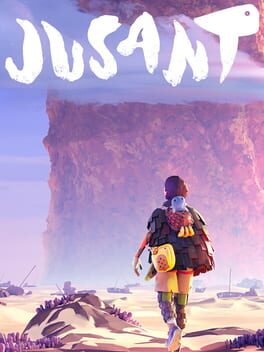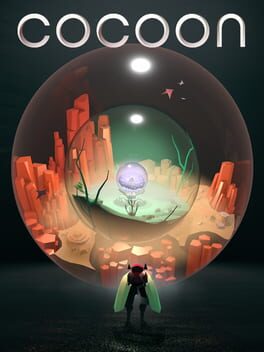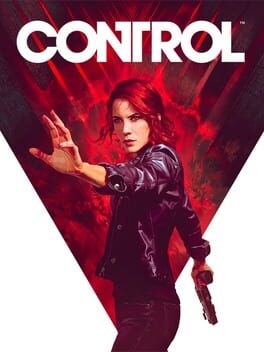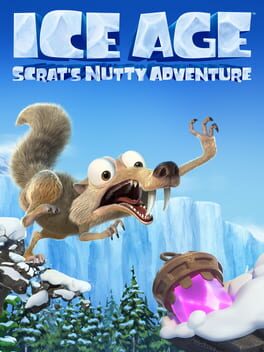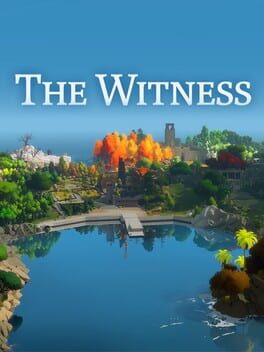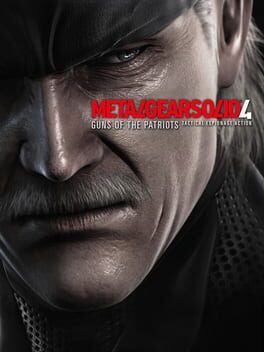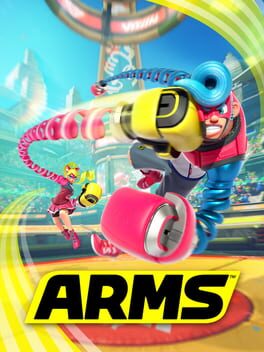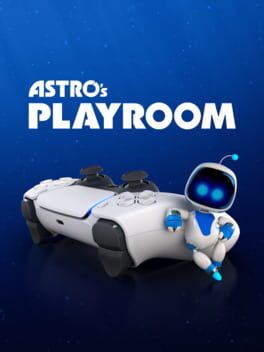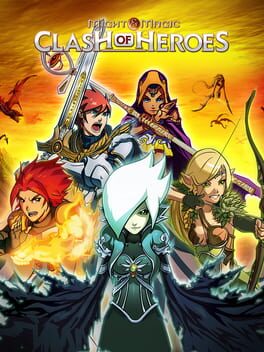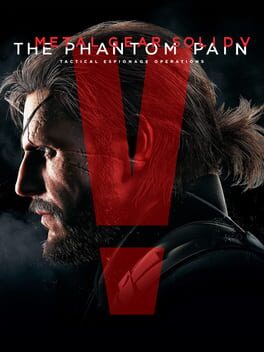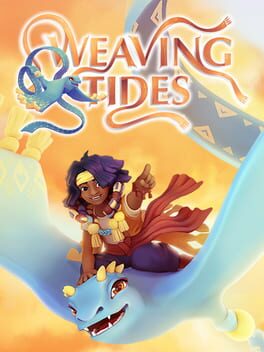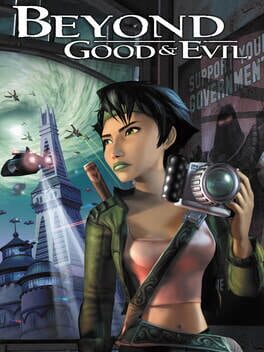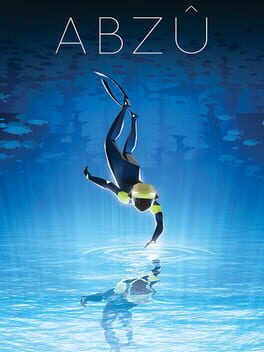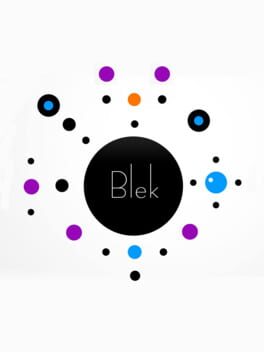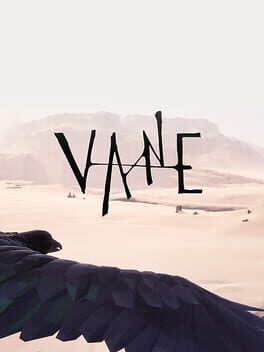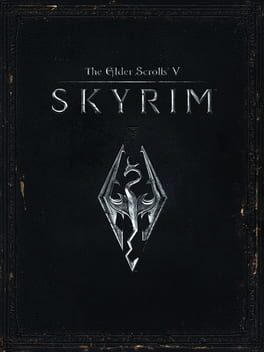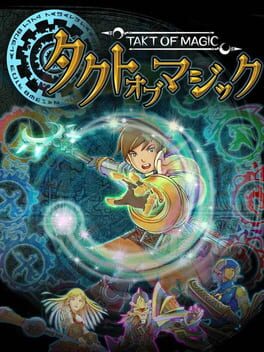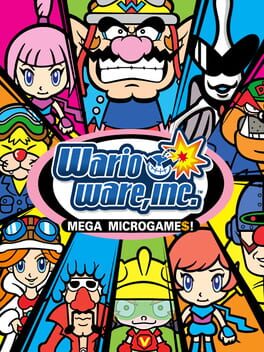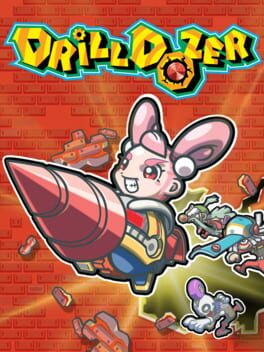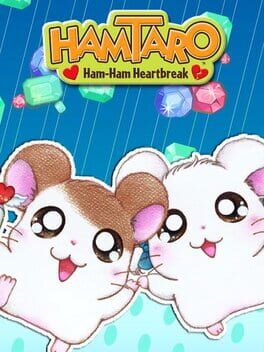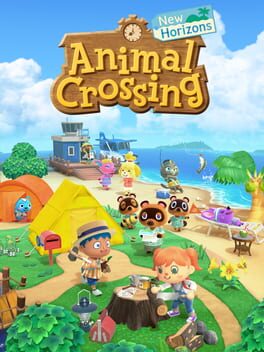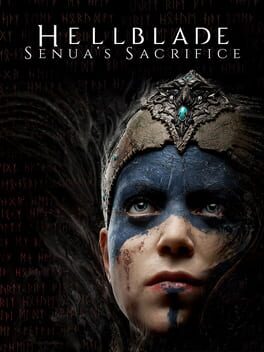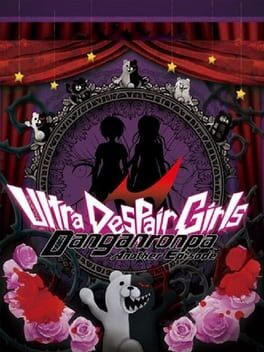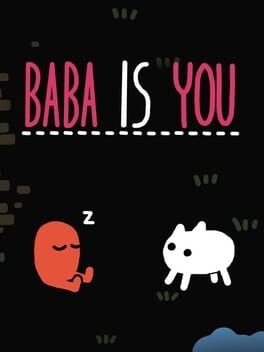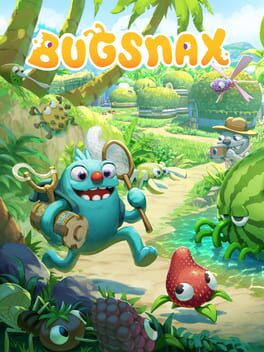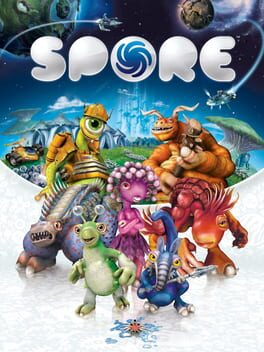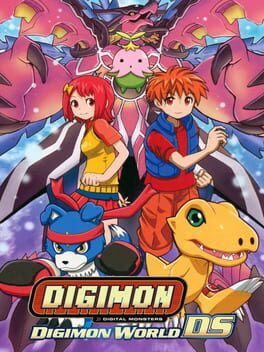xeivious
67 reviews liked by xeivious
Jusant
2023
I was really hoping for a climbing mechanic with more friction, and more consequence. I expected a really robust and juicy climbing system, but if you hold up on the analog stick and wiggle the triggers in a pumping motion, you can ascend most of this game's rock faces.
That said - Jusant is gorgeous, and really narratively beautiful. Then again, I didn't read any of the text in this game beyond chapter 1, and neither should you! Having to stop for a paragraph every five minutes is a pacing error of severe nightmareulousness.
To be clear - I don't mind reading in games! I love rpgs, I get along great with visual novels, I read all the little emails in my immersive sims, and I know how to read books! It just really messed up my flow in this one.
Still really liked it though!
That said - Jusant is gorgeous, and really narratively beautiful. Then again, I didn't read any of the text in this game beyond chapter 1, and neither should you! Having to stop for a paragraph every five minutes is a pacing error of severe nightmareulousness.
To be clear - I don't mind reading in games! I love rpgs, I get along great with visual novels, I read all the little emails in my immersive sims, and I know how to read books! It just really messed up my flow in this one.
Still really liked it though!
Jusant
2023
What is difficulty anymore. (Affectionate, ponderous.)
Games like Jusant and Cocoon feel like they are important links in the evolution of the medium. There is a rejection of modern game mechanics that grasps at something truer, purer than many games allow themselves to be. However, there are still enough vestiges to place where Jusant exists in the evolutionary timeline.
Jusant is simple. There are no unlockable abilities. There are no upgrades. You have one length of rope, three placeable climbing anchors, and a set amount of stamina throughout the entire game. As you cannot jump off ledges you cannot climb up to, you cannot die. The environment changes, but your basic gameplay mechanics are the same:
- Climb hand over hand between hand-holds
- Jump from a hand-hold to something else grabbable
- Place anchors
- Repel from or towards your last placed anchor
- Swing from an anchor to reach a space horizontally
Miss a hand-hold, and you fall to your last self-selected checkpoint, or otherwise attempt the climb again. Your stamina runs out the faster you climb and the more you jump; standing on solid ground resets it again. (Though honestly I don't remember what the penalty for running out of stamina is because I don't think it ever happened in my playthrough.)
It all sounds so simple and elegant, and the initial experience with the game is fastidious enough to feel unique. Each hand is controlled by the corresponding shoulder button. While one hand is gripping a ledge, the control stick moves the other hand in search of purchase. It’s a clunky introduction that gives the impression this will be a game that needs precision and careful thought.
But here is where my thoughts about difficulty come in. Once I got into the rhythm of alternating presses of the shoulder buttons, the uniqueness of selecting my next hand-hold felt trivial. The player character’s hands are so magnetic that their placement hardly ever mattered. Especially as the game tried introducing more environmental mechanics. When climbing a simple rock face filled with purchases, this mechanic had some weight to it. But when the game needed to convey more environmental / visual information, and thus constrict my hand-holds in linearity to accommodate, there no longer was any pretense of expression.
Ultimately, the slightly unorthodox controls are, in execution, more texture than anything else. There is no depth to this arrangement - for all that hand placement mattered, I might as well have been pressing one button instead of two. I am not sure this is a complaint. But it dovetails into my general thoughts about this game and difficulty.
Jusant is a game of very mild tension. I know that the lives system in games is archaic - conceptually, most games do not have a penalty for poor performance more creative than wasting some of the player’s time. The only question was whether that was watching a life counter tick down, or possibly starting over from an earlier level, or even the title screen. In a well designed game, making the player repeat content is not necessarily a bad thing, if the content being replayed reinforces skill proficiency that will be necessary at the previous point of failure. But many indie games, and even some modern big budget titles, have recognized that if you are not doing that, you are just wasting the players time.
So Jusant does not have a health system or a life system. Falling from any attempted climb has the very basic cause and effect of having to start over again from the bottom. And, I respect this. I really do. Jusant is not a game that needs those systems to be interesting - they add nothing to the other climbing systems that are in place. However, I had the experience of seeing success as an inevitability more than an aspiration - I just needed to persist.
I mentioned the controls first because my failures were rarely from a situation where I thought the game was demanding too much from me. Really, more often than not I just didn’t have the camera facing the right way to see the next objective and was sending myself on a mini fool’s errand. Moment to moment, technical execution did not feel like a threat. Minute to minute, failure did not feel like a threat. So level to level, the feeling of any kind of threat, and thus any kind of achievement from success, felt less and less like anything.
I think now of my experience with Celeste. Both are games “about climbing”, and both put you right back at the start should you fail a climb. However, Celeste frames each failure as death. You explode, the screen shakes. Celeste demanded more from me in technical execution, so much more so that there was incredible tension in repeated attempts, even if the game was overall kinder to my persistence than Jusant. In Jusant, you just fall. Celeste feels more visceral, but in reality, it lets me try again faster than Jusant, where my dude has to fall, pick himself back up, and walk back over to where he can try again. Not only that, the game was unprepared for the colossally stupid ways I found to fail. Multiple times in Jusant did I fail a jump, get my rope wound over some coral, and struggle to figure out how to repel myself back to the starting line. I wanted the option to cut my rope and “die” so badly, instead of figuring out what combination of anchoring, swinging and repelling would give me enough rope length back to start over.
At the same time, those challenges of happenstance were some of the most interesting puzzles I had to solve in the whole game.
I don’t think Jusant needs to be a difficult game. I don’t know how much it would have been improved by going full Death Stranding or Getting Over It with Bennett Foddy. Maybe it would have been great, maybe it would have lost all interest because people only wanted a game with climbing aesthetic and mechanical “vibes” more than anything with technical challenges. Because I was not solving great puzzles in Jusant. It was not a challenge of physical execution.
At its core, I think Jusant is just a cozy vibes game. A game that invites imagining that it is doing things more interesting than it provides.
3 stars, B rank. I did not read a single word of the collectibles because my god why the hell does this game have trinket-itis for when you’re walking around and not climbing??? Like, I would have liked this game and most games a lot better if it had zero trinkets, but if it needed to have trinkets, why aren’t they obtained by engaging with the central game mechanics? Maybe it's unfair damnation by association, but the proximity made me feel as if the developers saw all of their somewhat interesting transversal mechanics as steps along an amusement park ride rather than worthy of being thought about in terms of joy of movement.
A solid first effort, would be highly interested in what direction a sequel or knock-off would attempt.
Games like Jusant and Cocoon feel like they are important links in the evolution of the medium. There is a rejection of modern game mechanics that grasps at something truer, purer than many games allow themselves to be. However, there are still enough vestiges to place where Jusant exists in the evolutionary timeline.
Jusant is simple. There are no unlockable abilities. There are no upgrades. You have one length of rope, three placeable climbing anchors, and a set amount of stamina throughout the entire game. As you cannot jump off ledges you cannot climb up to, you cannot die. The environment changes, but your basic gameplay mechanics are the same:
- Climb hand over hand between hand-holds
- Jump from a hand-hold to something else grabbable
- Place anchors
- Repel from or towards your last placed anchor
- Swing from an anchor to reach a space horizontally
Miss a hand-hold, and you fall to your last self-selected checkpoint, or otherwise attempt the climb again. Your stamina runs out the faster you climb and the more you jump; standing on solid ground resets it again. (Though honestly I don't remember what the penalty for running out of stamina is because I don't think it ever happened in my playthrough.)
It all sounds so simple and elegant, and the initial experience with the game is fastidious enough to feel unique. Each hand is controlled by the corresponding shoulder button. While one hand is gripping a ledge, the control stick moves the other hand in search of purchase. It’s a clunky introduction that gives the impression this will be a game that needs precision and careful thought.
But here is where my thoughts about difficulty come in. Once I got into the rhythm of alternating presses of the shoulder buttons, the uniqueness of selecting my next hand-hold felt trivial. The player character’s hands are so magnetic that their placement hardly ever mattered. Especially as the game tried introducing more environmental mechanics. When climbing a simple rock face filled with purchases, this mechanic had some weight to it. But when the game needed to convey more environmental / visual information, and thus constrict my hand-holds in linearity to accommodate, there no longer was any pretense of expression.
Ultimately, the slightly unorthodox controls are, in execution, more texture than anything else. There is no depth to this arrangement - for all that hand placement mattered, I might as well have been pressing one button instead of two. I am not sure this is a complaint. But it dovetails into my general thoughts about this game and difficulty.
Jusant is a game of very mild tension. I know that the lives system in games is archaic - conceptually, most games do not have a penalty for poor performance more creative than wasting some of the player’s time. The only question was whether that was watching a life counter tick down, or possibly starting over from an earlier level, or even the title screen. In a well designed game, making the player repeat content is not necessarily a bad thing, if the content being replayed reinforces skill proficiency that will be necessary at the previous point of failure. But many indie games, and even some modern big budget titles, have recognized that if you are not doing that, you are just wasting the players time.
So Jusant does not have a health system or a life system. Falling from any attempted climb has the very basic cause and effect of having to start over again from the bottom. And, I respect this. I really do. Jusant is not a game that needs those systems to be interesting - they add nothing to the other climbing systems that are in place. However, I had the experience of seeing success as an inevitability more than an aspiration - I just needed to persist.
I mentioned the controls first because my failures were rarely from a situation where I thought the game was demanding too much from me. Really, more often than not I just didn’t have the camera facing the right way to see the next objective and was sending myself on a mini fool’s errand. Moment to moment, technical execution did not feel like a threat. Minute to minute, failure did not feel like a threat. So level to level, the feeling of any kind of threat, and thus any kind of achievement from success, felt less and less like anything.
I think now of my experience with Celeste. Both are games “about climbing”, and both put you right back at the start should you fail a climb. However, Celeste frames each failure as death. You explode, the screen shakes. Celeste demanded more from me in technical execution, so much more so that there was incredible tension in repeated attempts, even if the game was overall kinder to my persistence than Jusant. In Jusant, you just fall. Celeste feels more visceral, but in reality, it lets me try again faster than Jusant, where my dude has to fall, pick himself back up, and walk back over to where he can try again. Not only that, the game was unprepared for the colossally stupid ways I found to fail. Multiple times in Jusant did I fail a jump, get my rope wound over some coral, and struggle to figure out how to repel myself back to the starting line. I wanted the option to cut my rope and “die” so badly, instead of figuring out what combination of anchoring, swinging and repelling would give me enough rope length back to start over.
At the same time, those challenges of happenstance were some of the most interesting puzzles I had to solve in the whole game.
I don’t think Jusant needs to be a difficult game. I don’t know how much it would have been improved by going full Death Stranding or Getting Over It with Bennett Foddy. Maybe it would have been great, maybe it would have lost all interest because people only wanted a game with climbing aesthetic and mechanical “vibes” more than anything with technical challenges. Because I was not solving great puzzles in Jusant. It was not a challenge of physical execution.
At its core, I think Jusant is just a cozy vibes game. A game that invites imagining that it is doing things more interesting than it provides.
3 stars, B rank. I did not read a single word of the collectibles because my god why the hell does this game have trinket-itis for when you’re walking around and not climbing??? Like, I would have liked this game and most games a lot better if it had zero trinkets, but if it needed to have trinkets, why aren’t they obtained by engaging with the central game mechanics? Maybe it's unfair damnation by association, but the proximity made me feel as if the developers saw all of their somewhat interesting transversal mechanics as steps along an amusement park ride rather than worthy of being thought about in terms of joy of movement.
A solid first effort, would be highly interested in what direction a sequel or knock-off would attempt.
Okabu
2011
With this, I embrace that I am become hipster, destroyer of taste and my own sanity.
This game is a fucking disaster. One level crashed on me three times in a row. It’s an indie game! How many Cells of the mighty PS3 could its polygonal cel shading possibly be smoking? I thought the game developers had cleverly side-stepped needing to do in-depth object collision by having the player characters fly, but nope, escort-mission-esque bullshit of grounded characters is a central game mechanic!
Okabu is fastidious, tedious bullshit, and I love it.
Meant to be a co-op game, we were able to get a Dualshock 4 working for the demo, but not the full game proper. In that glimpse of what Okabu was meant to be, excellent. It is flawed and frictive, but great. Maybe after all the glossy flawless slop Nintendo’s put out over the last couple years (🥲) I’m hungry for something with some spice.
But maybe co-op games are where bad games are allowed to ascend. Where the fun is playing with another human through the bullshit, being in on the unfairness of it all.
Okabu is very well designed for a kind of immersive shared experience. For one, it looks like a joke. Blocky character models, NPC dialog that was obviously one white guy pretending to be a cartoon character, painfully obvious “go here” arrows painted every awful color of a 1960’s mathematics textbook (brown?????). But within that barrenness, that lack of excess and borderline ugly art direction, comes an extreme level of readability. I know what the game wants me to do, I know where the game wants me to go. Yet somehow trying to travel the equivalent distance from a kitchen to a dining room feels fucking impossible.
At the mercy of a fixed but always moving camera, the playable cloud whales get stuck on everything. Stupid robots shoot missiles from off screen, buddies get left behind, chickens need to be herded, and did my goat run off a cliff again??? Where did the fisherman with the plunger go, I need him! It’s all so stupid! What do you mean I failed the target time to get the time medal, I thought I was doing really good this round!
(I absolutely adore the implication that every goat, chicken, bull, and elf yells “FUCK!” (!#?!) when their garbage pathing has them run into an obstacle, like a rock 1 dm too high or a wall that bent too aggressively near their personal bubble.)
Because in a game being cute, and asking so little of my brain, and yet being so hard to execute what I KNOW I want to do, there’s room for real fun, real magic. Not the kind of “tee hee someone at Nintendo snuck in their Luigi Inflation fetish into Wonder,” but incomprehensible lines like “why is there sand on my anthropologist”
I’m being completely serious here. A game being slightly broken makes everything you do in it incredibly dumb. It could crash at any moment. Maybe the sound will cut out. But in this game, if everything worked smoothly - if the controls didn’t wildly vary between stiff and overly sensitive, if there was a shred of quality of life programmed in between some of the most on / off animations, maybe it’d be cute and playable - but maybe also it’d be boring as fuck! Where would be the drama of trying to control a barrel in a whirlpool? That sense of camaraderie from fighting not against your own belief in yourself, but the foe of the world itself?
Maybe that’s it! A level of meta unobtainable in normal games! Fighting against the game’s objectives is one thing, but feeling confident in being able to grasp the meta of the game and having to fight against the reality of the game, but not in a way where the game wants to do that. The game wants to be easy! It’s on your side! But its so bad at being on your side that it wraps around into being a passive enemy! Which creates a beautiful irony against the reality of what you must face!
But then I had to play the rest of the game single player and my god did that magic run out by the end.
So here I am left with a completely unsolvable quandary of what kind of score reflects the reality of Okabu. Like, if I were anyone who wrote for Metacritic, it has way too many glitches and crashes far too often to ever get a 7/10. And a good portion of my time with the game included a lot of bullshit. But after playing the demo multiplayer, I could see the philosophy this game was designed around. I could see that everywhere in how every level worked. Every level always needed two things to be done at once, which, in multiplayer, gives everyone a job and keeps everyone busy. The chaos of the camera trying to compromise between your zooming characters as you both get distracted by collectibles and blindsighted by enemies and trying to pick up whatever you just dropped and forgetting where you set it down - it’s wonderful.
But in single player, that gets turned into trying to get through a series of tasks that has you constantly switching between people in a micro-manage-y way for a game that is chugging. Without that spark, that glimpse into what Okabu was supposed to be, there is no way that I would have had the interest to get as good at this stupid game as I did to start seeing the potential for fun in becoming a speedrunning efficiency machine.
So do I rate Okabu - on it’s demo, that was good? On my imagining of that demo being even better for a full game length of co-op, which is hypothetical? On its technical performance, which is indefensibly baffling? On my enjoyment, which was irrational?
Because I know for a fact I bought this game to be a hipster. I panicked when I heard the PS3 store was closing and the only game I had played on my friend’s system was Metal Gear Solid 2 HD, which turned out to become my favorite game of all time. So what else was on this system I had previously skipped out on??? Was it flooded with gems that no one had ever heard of, that were soon to be lost to time?
So then I dropped way more money into my account than was wise or needed and probably maybe single-handledly got Sony to decide not to close the PS3 PSN store after all.
Okabu was the perfect example of what I imagined I was after. Something overlooked, stuck on the PS3 system, weird, and maybe amazing. I have imagined loving this game for years. But my friend wants his PS3 back this year and we never got around to buying another Sixaxis controller so I had to actually play this idea of a game.
Maybe I’ve crazied myself into thinking its music is spectacular. Who knows anymore! Not me! But look at this, the official bandcamp of the game studio never released the soundtrack - this random guy ripped the game like two years ago and the credited artists don’t even acknowledge ever having worked on or with video games at all! How dare they be ashamed of this project that I have decided to stake my hipster status on???
Because isn’t that the foundation of all love? The realization that something is fleeting, will be lost forever, and wanting to cherish and remember it while it's here? I think a lot of the art in Okabu is kinda trash, but my heart breaks that something so interesting will be lost forever with only incomplete collectible guides on dead forums as proof it ever existed.
I love Okabu. I decided to love Okabu before I played Okabu, and I found my way to loving the Okabu that existed for me to love.
---
And then I tried getting all the trophies so it’d be preserved in my PSN profile forever and they want me to collect 20,000 CLOUDBERRIES???? ARE YOU FUCKING KIDDING M-
This game is a fucking disaster. One level crashed on me three times in a row. It’s an indie game! How many Cells of the mighty PS3 could its polygonal cel shading possibly be smoking? I thought the game developers had cleverly side-stepped needing to do in-depth object collision by having the player characters fly, but nope, escort-mission-esque bullshit of grounded characters is a central game mechanic!
Okabu is fastidious, tedious bullshit, and I love it.
Meant to be a co-op game, we were able to get a Dualshock 4 working for the demo, but not the full game proper. In that glimpse of what Okabu was meant to be, excellent. It is flawed and frictive, but great. Maybe after all the glossy flawless slop Nintendo’s put out over the last couple years (🥲) I’m hungry for something with some spice.
But maybe co-op games are where bad games are allowed to ascend. Where the fun is playing with another human through the bullshit, being in on the unfairness of it all.
Okabu is very well designed for a kind of immersive shared experience. For one, it looks like a joke. Blocky character models, NPC dialog that was obviously one white guy pretending to be a cartoon character, painfully obvious “go here” arrows painted every awful color of a 1960’s mathematics textbook (brown?????). But within that barrenness, that lack of excess and borderline ugly art direction, comes an extreme level of readability. I know what the game wants me to do, I know where the game wants me to go. Yet somehow trying to travel the equivalent distance from a kitchen to a dining room feels fucking impossible.
At the mercy of a fixed but always moving camera, the playable cloud whales get stuck on everything. Stupid robots shoot missiles from off screen, buddies get left behind, chickens need to be herded, and did my goat run off a cliff again??? Where did the fisherman with the plunger go, I need him! It’s all so stupid! What do you mean I failed the target time to get the time medal, I thought I was doing really good this round!
(I absolutely adore the implication that every goat, chicken, bull, and elf yells “FUCK!” (!#?!) when their garbage pathing has them run into an obstacle, like a rock 1 dm too high or a wall that bent too aggressively near their personal bubble.)
Because in a game being cute, and asking so little of my brain, and yet being so hard to execute what I KNOW I want to do, there’s room for real fun, real magic. Not the kind of “tee hee someone at Nintendo snuck in their Luigi Inflation fetish into Wonder,” but incomprehensible lines like “why is there sand on my anthropologist”
I’m being completely serious here. A game being slightly broken makes everything you do in it incredibly dumb. It could crash at any moment. Maybe the sound will cut out. But in this game, if everything worked smoothly - if the controls didn’t wildly vary between stiff and overly sensitive, if there was a shred of quality of life programmed in between some of the most on / off animations, maybe it’d be cute and playable - but maybe also it’d be boring as fuck! Where would be the drama of trying to control a barrel in a whirlpool? That sense of camaraderie from fighting not against your own belief in yourself, but the foe of the world itself?
Maybe that’s it! A level of meta unobtainable in normal games! Fighting against the game’s objectives is one thing, but feeling confident in being able to grasp the meta of the game and having to fight against the reality of the game, but not in a way where the game wants to do that. The game wants to be easy! It’s on your side! But its so bad at being on your side that it wraps around into being a passive enemy! Which creates a beautiful irony against the reality of what you must face!
But then I had to play the rest of the game single player and my god did that magic run out by the end.
So here I am left with a completely unsolvable quandary of what kind of score reflects the reality of Okabu. Like, if I were anyone who wrote for Metacritic, it has way too many glitches and crashes far too often to ever get a 7/10. And a good portion of my time with the game included a lot of bullshit. But after playing the demo multiplayer, I could see the philosophy this game was designed around. I could see that everywhere in how every level worked. Every level always needed two things to be done at once, which, in multiplayer, gives everyone a job and keeps everyone busy. The chaos of the camera trying to compromise between your zooming characters as you both get distracted by collectibles and blindsighted by enemies and trying to pick up whatever you just dropped and forgetting where you set it down - it’s wonderful.
But in single player, that gets turned into trying to get through a series of tasks that has you constantly switching between people in a micro-manage-y way for a game that is chugging. Without that spark, that glimpse into what Okabu was supposed to be, there is no way that I would have had the interest to get as good at this stupid game as I did to start seeing the potential for fun in becoming a speedrunning efficiency machine.
So do I rate Okabu - on it’s demo, that was good? On my imagining of that demo being even better for a full game length of co-op, which is hypothetical? On its technical performance, which is indefensibly baffling? On my enjoyment, which was irrational?
Because I know for a fact I bought this game to be a hipster. I panicked when I heard the PS3 store was closing and the only game I had played on my friend’s system was Metal Gear Solid 2 HD, which turned out to become my favorite game of all time. So what else was on this system I had previously skipped out on??? Was it flooded with gems that no one had ever heard of, that were soon to be lost to time?
So then I dropped way more money into my account than was wise or needed and probably maybe single-handledly got Sony to decide not to close the PS3 PSN store after all.
Okabu was the perfect example of what I imagined I was after. Something overlooked, stuck on the PS3 system, weird, and maybe amazing. I have imagined loving this game for years. But my friend wants his PS3 back this year and we never got around to buying another Sixaxis controller so I had to actually play this idea of a game.
Maybe I’ve crazied myself into thinking its music is spectacular. Who knows anymore! Not me! But look at this, the official bandcamp of the game studio never released the soundtrack - this random guy ripped the game like two years ago and the credited artists don’t even acknowledge ever having worked on or with video games at all! How dare they be ashamed of this project that I have decided to stake my hipster status on???
Because isn’t that the foundation of all love? The realization that something is fleeting, will be lost forever, and wanting to cherish and remember it while it's here? I think a lot of the art in Okabu is kinda trash, but my heart breaks that something so interesting will be lost forever with only incomplete collectible guides on dead forums as proof it ever existed.
I love Okabu. I decided to love Okabu before I played Okabu, and I found my way to loving the Okabu that existed for me to love.
---
And then I tried getting all the trophies so it’d be preserved in my PSN profile forever and they want me to collect 20,000 CLOUDBERRIES???? ARE YOU FUCKING KIDDING M-
Cocoon
2023
Nearly flawless. I have played games that made me feel smart, and games that I thought were smart, but this is perhaps the first time solving a puzzle felt cool. Cocoon is sick, slick, and everything I want games to be by being nothing I hate about how games are.
There is no language. There is no tutorializing. There is one action button. The pause menu is beautifully vacant. There are only puzzles, set in increasingly lavish environments, that breeze by concepts that could by themselves sustain entire game-lengths of reconfigurations.
Cocoon has mechanics, but writing about them feels nonsensical in a uniquely video-game way, (complementary). I put Cocoon in the same realm as Thumper or Pac Man, where the elements that form the game's world and interactivity do not need to be explained or understood outside of how the player interacts with them. I will shoot anyone who says that Cocoon has Lore™ and write the word ~Aesthetic~ in bullets across their chest.
Know that my first instinct is to stop writing here, because the game is short, and wonderful, and you should just play it instead of having anyone else try to describe it. It exists in a world without words, and words will ruin it. But I want to say more nice things about a good game since I rarely like anything this much - we're only a week into 2024 and I already like it better than anything I played in 2023, recency bias be damned.
Every level can be contained in a marble. You can jump into a marble and explore its world. You can take a marble and bring it into another marble. Carrying a marble grants one extra ability with the press of the action button. This at once turns every marble into a game map, a lock, a key, a power-up, a parking lot, and luggage.
There is a unique feeling of zen and oneness as you become familiar with the ways all these relationships fit together. One that was confirmed for me when this game's "level select" screen, available upon the game's completion, described your position in the game by what percentage through your journey any instance represented. Although levels have "backtracking", returning to a marble always means seeing more than you were able to encounter before, and the nature of Cocoon's design eliminates ambiguity of where you should be. Everything is connected in a way that gives Cocoon such amazing thematic coherence while also being often unintelligible to describe.
Normally I hate collectibles, and the extra hallways they coax developers to create to house them. In Cocoon, the sparse and easily missable alternate paths make sense to me as ways to keep your mind looking for alternate interpretations of your environment. Even though Cocoon is a delightfully linear progression, there is enough renegotiation of how spaces fit together that I welcome the mere suggestion that the straight way forward is not the only way to think.
The boss battles felt a little out of place, but I still enjoyed them. Each one used a new marble ability never used again elsewhere in the game, little bite sized reflex-based puzzles to punctuate the end of a world. With no health system and no life system, even a failed attempt made me laugh, as getting bested by a boss meant being thrown out of that marble's world altogether. Sometimes presentation is everything for effecting your mindset.
Without its surrealist cosmic bug theming, Cocoon could have functionally been the same, but wouldn't have the same soul. There is something inherently fun about a small worker bug carrying a world carrying worlds on its back. I love his playful and jaunty gait, the way he bounces under the weight of his load. His wings vibrating when he can interact with contextual switches, their size making it easy to read which way he's facing - it's all such good game character design.
4.5 stars at A+ rank is rare for me, and even I question what is holding me back from giving it full marks. Once it was firing on all cylinders, pulling twists and inversions that surprised and delighted, I simultaneously wanted more while becoming aware how the game was straining to end with grace. Maybe I'll change my score with more time to let the game settle. Absolutely phenomenal, I'll play any mediocre clone I can get my hands on.
There is no language. There is no tutorializing. There is one action button. The pause menu is beautifully vacant. There are only puzzles, set in increasingly lavish environments, that breeze by concepts that could by themselves sustain entire game-lengths of reconfigurations.
Cocoon has mechanics, but writing about them feels nonsensical in a uniquely video-game way, (complementary). I put Cocoon in the same realm as Thumper or Pac Man, where the elements that form the game's world and interactivity do not need to be explained or understood outside of how the player interacts with them. I will shoot anyone who says that Cocoon has Lore™ and write the word ~Aesthetic~ in bullets across their chest.
Know that my first instinct is to stop writing here, because the game is short, and wonderful, and you should just play it instead of having anyone else try to describe it. It exists in a world without words, and words will ruin it. But I want to say more nice things about a good game since I rarely like anything this much - we're only a week into 2024 and I already like it better than anything I played in 2023, recency bias be damned.
Every level can be contained in a marble. You can jump into a marble and explore its world. You can take a marble and bring it into another marble. Carrying a marble grants one extra ability with the press of the action button. This at once turns every marble into a game map, a lock, a key, a power-up, a parking lot, and luggage.
There is a unique feeling of zen and oneness as you become familiar with the ways all these relationships fit together. One that was confirmed for me when this game's "level select" screen, available upon the game's completion, described your position in the game by what percentage through your journey any instance represented. Although levels have "backtracking", returning to a marble always means seeing more than you were able to encounter before, and the nature of Cocoon's design eliminates ambiguity of where you should be. Everything is connected in a way that gives Cocoon such amazing thematic coherence while also being often unintelligible to describe.
Normally I hate collectibles, and the extra hallways they coax developers to create to house them. In Cocoon, the sparse and easily missable alternate paths make sense to me as ways to keep your mind looking for alternate interpretations of your environment. Even though Cocoon is a delightfully linear progression, there is enough renegotiation of how spaces fit together that I welcome the mere suggestion that the straight way forward is not the only way to think.
The boss battles felt a little out of place, but I still enjoyed them. Each one used a new marble ability never used again elsewhere in the game, little bite sized reflex-based puzzles to punctuate the end of a world. With no health system and no life system, even a failed attempt made me laugh, as getting bested by a boss meant being thrown out of that marble's world altogether. Sometimes presentation is everything for effecting your mindset.
Without its surrealist cosmic bug theming, Cocoon could have functionally been the same, but wouldn't have the same soul. There is something inherently fun about a small worker bug carrying a world carrying worlds on its back. I love his playful and jaunty gait, the way he bounces under the weight of his load. His wings vibrating when he can interact with contextual switches, their size making it easy to read which way he's facing - it's all such good game character design.
4.5 stars at A+ rank is rare for me, and even I question what is holding me back from giving it full marks. Once it was firing on all cylinders, pulling twists and inversions that surprised and delighted, I simultaneously wanted more while becoming aware how the game was straining to end with grace. Maybe I'll change my score with more time to let the game settle. Absolutely phenomenal, I'll play any mediocre clone I can get my hands on.
Control
2019
I need them to get WEIRDER, like, chronically. More Ashtray Mazes and less fuckin' weapon mods.
Jusant
2023
Overall, a pleasant experience despite some pacing issues and underutilized mechanics. Jusant basically fits every trope of the Journey-like (a solo pilgrimage from point A to B to C, heavy focus on atmospheric exploration with some environmental puzzles, rediscovering an abandoned/forgotten civilization, etc), but what separates it from most typical copycats is that the main moment-to-moment gameplay is actually pretty engaging this time around! The obvious example here is how the game forces you to tightly grip your controller’s triggers to climb and hang onto ledges for dear life, but most actions in-between such as placing pinons/swinging back and forth with your grapple/jumping across and between ledges keep the interaction flowing smoothly. Interestingly, I would say Jusant’s problem is also opposite to that of most Journey-likes, because it handles its micro well enough, but falters a bit in its execution of the macro. If I were to compare the climbing to say, that of Shadow of the Colossus, then the difference in sense of scale becomes more readily apparent. Shadow of the Colossus takes places in mostly connected and open environments (with a few in vast caverns), but a good chunk of Jusant’s climbing takes place indoors in often cramped spaces that left me wishing there was an FOV slider to compensate for the often uncomfortably close camera getting stuck on walls. I do think it’s a bit of a missed opportunity that Jusant didn’t get any opportunities to showcase its world in its entirety and instead cut off each area into its own isolated level. A part of me was hoping that it would execute this as a sort of mirror to Journey; whereas Journey tries to keep the final shining summit in view at all times outside to remind the player of their final destination, I think Jusant could have combined all the outside areas and given the player the opportunity to look back from increasing heights to remind themselves of just how far they’ve come.
Getting back to macro vs micro, I have a few quibbles and suggestions in regards to improving the overall pacing, as there were some elements that felt like occasional stumbling blocks. The environments are sometimes difficult to read (especially in indoor settings) because climbable rocks/edges often look similarly shaded to their non-interactable surroundings, which resulted in me getting lost a few times. The in-game guide (“Listen” via pressing right on the d-pad) could be improved in this aspect, since it gives you a general direction to move towards but doesn’t solve the issue of figuring out what background object is required to ascend. Speaking of background objects, the environments are often littered with so many differently-colored materials, which contributes to the above problem of figuring out the way forward and also makes the task of searching for collectibles more annoying unless you’re just focusing on the context-sensitive prompts. I sadly also have to agree with others here that the lore dumps via the letters/diary entries didn’t do much for me (resulting in a narrative that I mostly ignored), and I would have preferred emptying the surroundings somewhat to better establish a feeling of presence with a heavier emphasis on environmental storytelling. In addition, removing these excess objects would reduce the amount of 3D polygonal jank present in the game: I often found myself suddenly stagnating and getting stuck on the floor from bumpy geometry, and the same rung true while climbing because I once had to restart from the last checkpoint after getting trapped by some nearby vines.
I’m going to nitpick the climbing as well and concur regarding the lack of tension, as the game never forced me to fully leverage my capabilities: again, this is a key detail that separates this game’s climbing from the heights reached by Shadow of the Colossus. The game could have leaned more into tight timing segments that forced the player to quickly scale ledges before they crumbled; this is briefly explored in Chapter 3 with the sunlight burning off plant roots, but then gets replaced with more calculated climbing for the rest of the game. Similarly, the pinons feel underutilized: I can’t recall any instance where I felt obligated to place down more than one pinon at a time while climbing, and that was often due to needing the ability to swing back and forth rather than using it as a safety net. A possible solution here is reworking the resting mechanic so that it could only be used at a pinon: this would also solve the pacing issue of having to constantly pause to regain stamina, and force the player to more carefully place pinons to make the most out of the stamina gauge's capacity. Finally, I was surprised that I couldn’t alter the amount of slack/tension in the rope while climbing and hanging onto ledges. This ability would allow the player additional control over jumps and climbing capacity without needing to expend a pinon (since I rarely ever reached the full rope length as is), which in turn would give the player more freedom to create shortcuts by letting them go for riskier maneuvers that the restrictive mechanics would prohibit otherwise.
There’s a lot of room for improvement, but I nevertheless appreciate that Jusant doesn’t overstay its welcome. Despite being a bit rough around the edges, the core gameplay is a nice change of pace from its peers, and it further distinguishes itself from its competition with its restrained ending. Instead of going for a bombastic “victory-lap” finale, Jusant has the modesty to bring itself back to earth with a no frills back-to-basics climbing segment devoid of the previous level gimmicks and clutter. That's the game in a nutshell: it might not push the envelope of the medium, but it accomplishes its premise in the time given with solid peaks despite some shaky consistency. In a genre full of misguided and uncompelling carbon copies, I’ll gladly take it.
Getting back to macro vs micro, I have a few quibbles and suggestions in regards to improving the overall pacing, as there were some elements that felt like occasional stumbling blocks. The environments are sometimes difficult to read (especially in indoor settings) because climbable rocks/edges often look similarly shaded to their non-interactable surroundings, which resulted in me getting lost a few times. The in-game guide (“Listen” via pressing right on the d-pad) could be improved in this aspect, since it gives you a general direction to move towards but doesn’t solve the issue of figuring out what background object is required to ascend. Speaking of background objects, the environments are often littered with so many differently-colored materials, which contributes to the above problem of figuring out the way forward and also makes the task of searching for collectibles more annoying unless you’re just focusing on the context-sensitive prompts. I sadly also have to agree with others here that the lore dumps via the letters/diary entries didn’t do much for me (resulting in a narrative that I mostly ignored), and I would have preferred emptying the surroundings somewhat to better establish a feeling of presence with a heavier emphasis on environmental storytelling. In addition, removing these excess objects would reduce the amount of 3D polygonal jank present in the game: I often found myself suddenly stagnating and getting stuck on the floor from bumpy geometry, and the same rung true while climbing because I once had to restart from the last checkpoint after getting trapped by some nearby vines.
I’m going to nitpick the climbing as well and concur regarding the lack of tension, as the game never forced me to fully leverage my capabilities: again, this is a key detail that separates this game’s climbing from the heights reached by Shadow of the Colossus. The game could have leaned more into tight timing segments that forced the player to quickly scale ledges before they crumbled; this is briefly explored in Chapter 3 with the sunlight burning off plant roots, but then gets replaced with more calculated climbing for the rest of the game. Similarly, the pinons feel underutilized: I can’t recall any instance where I felt obligated to place down more than one pinon at a time while climbing, and that was often due to needing the ability to swing back and forth rather than using it as a safety net. A possible solution here is reworking the resting mechanic so that it could only be used at a pinon: this would also solve the pacing issue of having to constantly pause to regain stamina, and force the player to more carefully place pinons to make the most out of the stamina gauge's capacity. Finally, I was surprised that I couldn’t alter the amount of slack/tension in the rope while climbing and hanging onto ledges. This ability would allow the player additional control over jumps and climbing capacity without needing to expend a pinon (since I rarely ever reached the full rope length as is), which in turn would give the player more freedom to create shortcuts by letting them go for riskier maneuvers that the restrictive mechanics would prohibit otherwise.
There’s a lot of room for improvement, but I nevertheless appreciate that Jusant doesn’t overstay its welcome. Despite being a bit rough around the edges, the core gameplay is a nice change of pace from its peers, and it further distinguishes itself from its competition with its restrained ending. Instead of going for a bombastic “victory-lap” finale, Jusant has the modesty to bring itself back to earth with a no frills back-to-basics climbing segment devoid of the previous level gimmicks and clutter. That's the game in a nutshell: it might not push the envelope of the medium, but it accomplishes its premise in the time given with solid peaks despite some shaky consistency. In a genre full of misguided and uncompelling carbon copies, I’ll gladly take it.
I’ve never been so proud to award a game 2 stars / C rank. It looks like garbage, the credits are a minute long, and it is un-ironically some of the most fun I’ve had playing a game this year.
Let me be clear, this is not a blanket endorsement. You should probably not play this. The value I found in this game only elevates it to the level of playable mediocrity. But the context! It’s an Ice Age™ spin-off 3D-platformer on a shoe-string budget! Its mere existence is a travesty, a waste of plastic destined for the discounted (but never discounted enough) back shelf of a rural Walmart gaming section, next to a half-opened Mario amiibo and a Frozen II-branded loofah. It is so absurd that I joked for years if it ever dropped to $5, I would play it for the meme, and what do you know, Sony dropped it as part of their shitty Netflix subscription.
But no joke, Scrat’s Nutty Adventure has my favorite double-jump I’ve encountered in all of 3D gaming.
I’ve been learning recently that I don’t hate nuts, but that my mom made god-awful walnut brownies when I was a kid. Just raw, uncooked giant walnut chunks on top of otherwise normal-ass brownies with some decent frosting. My multi-decade belief that I hated nuts, (all nuts, because my mom threw raw, whole almonds and hazelnuts on all sorts of things they had no business being on), was squarely my mom’s fault for jamming a flavor she liked onto other flavors she liked without understanding how they worked together. It was not the walnuts’ fault, but they took the blame, because they were tangible. They stood out as The Thing I Did Not Like about my Brownie Experience.
But nuts are fine if they are prepared in a recipe that understands how to use their attributes correctly.
This is basically how I feel about double jumps. I have long hated them. There are some games, where as soon as I feel the character jump for the first time, I think, “oh, I’m gonna get a double jump later.” Sometimes it's because the level design gives it away. Sometimes it's because the regular jump feels like an incomplete action. If half the game will be designed for me to need to do the double jump, that will condition my muscle memory to always double jump even when I need a regular jump. And if that’s the case for me, that goes triple for the developers and testers making the game. Why bother fine-tuning the feel of the regular jump if, after a certain point, I’ll only do so on accident? The existence of the double jump renders the regular jump ungraded developer homework.
And frustratingly, that double jump muscle memory will make me worse at the game! I remember as a kid the first time I encountered this in Super Mario Sunshine with that god-awful Hover Nozzle. That was the first time I became aware of how a game’s basic mechanics incentivized me to goblinize movement to absurdity. I was so scared of falling off the edge that I always activated the Hover Nozzle. Even when I could see mid-jump that I would have made the gap with a regular jump. That activating the Hover Nozzle actually made clearing the gap take more time than if I’d done a regular jump. Because activating the Hover Nozzle at the wrong time would either keep or lose momentum from the regular jump, which then required course correction as I tried to hover back to where I would have landed if I hadn’t pressed the Hover Nozzle button in the first place.
Adding to this, Mario could grab onto ledges. So I didn’t need to clear a jump, I could just get close-enough to making a jump. Which meant I didn’t gain precise knowledge of jumping trajectory and timing, but an awareness of the fuzzy “Mario will probably cling onto the ledge and / or land on the ledge” zone.
I saw myself do this. I felt like an idiot watching myself do this. And when the game took away the ability to hover for certain missions, now I sucked! I had no idea where the distance of my jump would take me! My sense of timing, of how long I could hang in the air, it was all wrong! Beating those challenges didn’t make me feel better, it created this weird longing for the Hover Nozzle back, that I felt naked without it - even though I also knew the Hover Nozzle was why I sucked at these Hover Nozzle-less challenges in the first place!
That’s the most extreme example, but the behavior exists in spirit even in games I think have put a lot of effort into their movement systems and level design. Hollow Knight had a solid enough standard jump I didn’t suspect I’d get a double jump until the level geometry told me I would. That double jump was hidden far enough into the game I got pretty adept at regular jumping! But the instant I got that double jump, my idiot brain mashed it like a crutch and promptly forgot all the innate timing I’d mastered for the previously satisfying regular jump.
Because Hollow Knight made the mistake of making the double jump too “fun.” The feeling of flight from pressing the double jump button was immediate, dynamic, weighty, satisfying enough that the temptation to press it smothered other impulses to try controlling my landing position more intelligently. Although coming from the other direction, Hollow Knight still had the same result of me needlessly double jumping all over the place, missing ledges and feeling like an idiot. Hollow Knight’s crushing combat difficulty beat some of that instinct out of me when it mattered, but the implementation of the double jump made the process more tedious than it needed to be.
And with all that preamble, I can now extol the virtues of Scrat. Because in Scrat’s Nutty Adventure, this automatic double jump mania never happened. I always knew when to jump, double jump, or try for a “secret” third jump by tail spin attacking mid-air. Each felt like an equally important, discrete action that I could independently determine the merit of using or not using.
Jumping as Scrat is not immediately “fun” the way that it is in Hollow Knight. Each jump type has start-up lag and end-lag animations that stop the process of jumping from becoming an automatic impulse. If you’re trying to rush through a level with as much speed as possible, you want to jump only the minimum required amount. (And since the levels in Ice Age are ugly as sin, I definitely had that mindset.)
Jumping as Scrat is mostly for covering horizontal distances. The height gained from double-jumping is negligible. Although it is necessary for getting on to some ledges, level geometry typically only requires you to think about the extra distance or the extra height you would gain, but not both at the same time. A gap that would require the double jump to cross will often be at the same starting and ending elevation, while a ledge requiring vertical height will often be in a tight corridor without any gaps to fall down.
Thinking about how clear each intended jump sequence was in Scrat’s Nutty Adventure made me realize how double jumping is often used as a crutch in other games. If you gain enough height from a double jump, and you can control the direction of your fall, then cautious players are rewarded from early double jumps by changing the action from “jumping” to “controlled falling”, which requires less predictive power and less spatial awareness of your character’s capabilities. Scrat, however, barely goes up one body length during the course of a jump, so controlled falling is not really an option. Additionally, his jump animations for the double-jump and tail spin extension are so chaotic that controlled falling is much less reliable. You must properly gauge distance and timing before pressing the jump button, not during or after.
Because Scrat’s jumps are fairly rigid, the geometry is more forgiving. Landing spaces are wide and easily visible. I noticed that the depth of field for the camera is fairly close to Scrat’s body, which helps sell the feeling that he is a small creature in a larger world. An effect of this, compared to Mario games that let the camera zoom out to show off large and beautiful landscapes, is that gauging jump distances actually gets easier. The perspective change of platforms getting closer or farther from the camera’s vanishing point is instinctual, which creates an innate understanding regardless of what the environment looks like. If you can clearly make out the other side of the gap, regular jump. If the other side of the gap looks a little daunting, double jump. If the ledge is so far away that you don’t think you can even get over there, but there are no other platforms in between, then you need to double jump with tail spin extension. But the double jump tail spin extension is only needed for accessing optional collectibles, so your sense of jump or double jump will be nicely honed for finishing the main routes of the campaigns.
It did take me some time with the game to understand its flow and appreciate these elements of its design, because, again, so much of this game is complete ass. Scrat has a health bar and … purple gem meter (?) that are some of the most shovel-ware core of graphics. There is combat, and it is so unsatisfying. Even common beetle enemies take way too many hits to die, with no health bars or any indication as to how close to death they are. Scrat has zero transition frames between his attack animations in his standard combo, and sound design is wildly inconsistent and mushy.
But despite some audio glitches, a couple end-of-world sequences that had me fall through the floor, and some truly terrible font choice and text placement, this game has actual design work in it.
Scrat’s Nutty Adventure makes me think of the Oscars. Who wins best actor? It’s not whoever did the best acting in all of the movies made that year - its whoever did the best acting in a well produced movie with a good script and a good director and a solid cast that didn’t hold the actor back. Its a performance that is tangible, even if it is the result of multiple people doing their job well. Think instead of a performance that appears only mediocre on screen, but had a terrible script, a dead-weight cast, and a wrong-headed director. Summoning that level of mediocrity in such circumstances certainly speaks to a level of acting worthy of consideration.
In that spirit, the level design of Scrat’s Nutty Adventure deserves an award. I have said that the visuals are not appealing more than once, but once I got over the color-less palette, I noticed real care had gone into making every level feel like a place. That level paths through mountains and cliffs wound in such a way where every set of platforming jumps could theoretically be stumbled upon in nature. Ever since the Mario games have gone full abstract nonsense in their platforming environments, it was a nice thing to notice.
Because how much cheaper and easier would it have been to copy paste a few floating platforms and have an Ice Age themed background you couldn’t interact with? Instead of committing to the lived experience of being a small Scrat in an indifferent world?
I got curious and went back to look at some Scrat clips on YouTube, and you know, his janky attack animations are true to the source material! It was a visual joke that he did kung-fu at a lower frame rate than the rest of the movie, because the rest of the Ice Age world was committed to being more grounded. What I’d initially laughed off as cheap game production was actually trying to dig into the essence of the Scrat character!
At the same time, the developers knew no one gave a flying fuck about this project, or Scrat, and I love the decisions they made to go nuts. Magic floating slingshots? Who cares! Telekinesis as an unlockable power-up? Sure, go for it! Not having to get right up to blocks to move blocks for moving-block-puzzles is very kind of you, actually!
There is a player-focused consideration that can be felt as one acclimates to the complete lack of polish. There’s no life system, and although Scrat has a health bar, it is unaffected by missing jumps. I think that takes the pressure off of jumping enough to let one focus on learning how the jumps work. (Hey, maybe the lives system in Super Mario Sunshine was why I was so cautious all the time!) Because although Scrat can’t hold on to ledges, forcing you to clear jumps instead of getting close enough, missing a jump merely brings you back to try again.
Where Scrat’s Nutty Adventure feels like a real conversation with the player is if you endeavor to look for all the pointless collectibles. Some of their hiding places are downright devious. Not since the first Ratchet & Clank have I felt a developer so eager to reward a player for thinking “that looks out of bounds, I’mma try to get over there.” But also, half the time that really is out of bounds and you’ll fall through some level geometry. Which is pretty funny in its own right!
Again, I do not think anyone will find Scrat’s Nutty Adventure as profound as I did. But it was so different from my expectations that it broke me out of a multi-month funk of not enjoying games very much. (I’m still working on the essay for how much that other game broke my spirit, actually!) I’m so happy this years-long personal meme in the making gave me something to latch onto, and also happy I was able to Platinum it in a single day. And of course I used a collectibles guide, because fuck if it deserved more of my time than that.
I will close this out by typing out here, in its entirety, the 18 (!) credited people who made this game. The production company, or even their special thanks section, contained almost as many people! I commend their hard work, for actually trying and giving a fuck, on a project that probably no one but me will ever respect. God’s speed, you glorious bastards.
CEO
Stewart Gilray
CTO
Steven Caslin
Producer
David Schumacher
Design Lead
Rick Payne
Designers
Cameron Chalmers
Dave Price
Programming Lead
Ben Price
Programmers
Joseph Barber
Darren Foster
Art Lead
Mike Engstrom
Artists
Dominic Littler
Charlotte (Eva) Watson
Hajinalka Szanto
Aaron Humphreys
Animation Lead
Billy Allison
Animation
Ed Swain
Quality Assurance
Kieran Forrester
Audio
Allister Brimble
Let me be clear, this is not a blanket endorsement. You should probably not play this. The value I found in this game only elevates it to the level of playable mediocrity. But the context! It’s an Ice Age™ spin-off 3D-platformer on a shoe-string budget! Its mere existence is a travesty, a waste of plastic destined for the discounted (but never discounted enough) back shelf of a rural Walmart gaming section, next to a half-opened Mario amiibo and a Frozen II-branded loofah. It is so absurd that I joked for years if it ever dropped to $5, I would play it for the meme, and what do you know, Sony dropped it as part of their shitty Netflix subscription.
But no joke, Scrat’s Nutty Adventure has my favorite double-jump I’ve encountered in all of 3D gaming.
I’ve been learning recently that I don’t hate nuts, but that my mom made god-awful walnut brownies when I was a kid. Just raw, uncooked giant walnut chunks on top of otherwise normal-ass brownies with some decent frosting. My multi-decade belief that I hated nuts, (all nuts, because my mom threw raw, whole almonds and hazelnuts on all sorts of things they had no business being on), was squarely my mom’s fault for jamming a flavor she liked onto other flavors she liked without understanding how they worked together. It was not the walnuts’ fault, but they took the blame, because they were tangible. They stood out as The Thing I Did Not Like about my Brownie Experience.
But nuts are fine if they are prepared in a recipe that understands how to use their attributes correctly.
This is basically how I feel about double jumps. I have long hated them. There are some games, where as soon as I feel the character jump for the first time, I think, “oh, I’m gonna get a double jump later.” Sometimes it's because the level design gives it away. Sometimes it's because the regular jump feels like an incomplete action. If half the game will be designed for me to need to do the double jump, that will condition my muscle memory to always double jump even when I need a regular jump. And if that’s the case for me, that goes triple for the developers and testers making the game. Why bother fine-tuning the feel of the regular jump if, after a certain point, I’ll only do so on accident? The existence of the double jump renders the regular jump ungraded developer homework.
And frustratingly, that double jump muscle memory will make me worse at the game! I remember as a kid the first time I encountered this in Super Mario Sunshine with that god-awful Hover Nozzle. That was the first time I became aware of how a game’s basic mechanics incentivized me to goblinize movement to absurdity. I was so scared of falling off the edge that I always activated the Hover Nozzle. Even when I could see mid-jump that I would have made the gap with a regular jump. That activating the Hover Nozzle actually made clearing the gap take more time than if I’d done a regular jump. Because activating the Hover Nozzle at the wrong time would either keep or lose momentum from the regular jump, which then required course correction as I tried to hover back to where I would have landed if I hadn’t pressed the Hover Nozzle button in the first place.
Adding to this, Mario could grab onto ledges. So I didn’t need to clear a jump, I could just get close-enough to making a jump. Which meant I didn’t gain precise knowledge of jumping trajectory and timing, but an awareness of the fuzzy “Mario will probably cling onto the ledge and / or land on the ledge” zone.
I saw myself do this. I felt like an idiot watching myself do this. And when the game took away the ability to hover for certain missions, now I sucked! I had no idea where the distance of my jump would take me! My sense of timing, of how long I could hang in the air, it was all wrong! Beating those challenges didn’t make me feel better, it created this weird longing for the Hover Nozzle back, that I felt naked without it - even though I also knew the Hover Nozzle was why I sucked at these Hover Nozzle-less challenges in the first place!
That’s the most extreme example, but the behavior exists in spirit even in games I think have put a lot of effort into their movement systems and level design. Hollow Knight had a solid enough standard jump I didn’t suspect I’d get a double jump until the level geometry told me I would. That double jump was hidden far enough into the game I got pretty adept at regular jumping! But the instant I got that double jump, my idiot brain mashed it like a crutch and promptly forgot all the innate timing I’d mastered for the previously satisfying regular jump.
Because Hollow Knight made the mistake of making the double jump too “fun.” The feeling of flight from pressing the double jump button was immediate, dynamic, weighty, satisfying enough that the temptation to press it smothered other impulses to try controlling my landing position more intelligently. Although coming from the other direction, Hollow Knight still had the same result of me needlessly double jumping all over the place, missing ledges and feeling like an idiot. Hollow Knight’s crushing combat difficulty beat some of that instinct out of me when it mattered, but the implementation of the double jump made the process more tedious than it needed to be.
And with all that preamble, I can now extol the virtues of Scrat. Because in Scrat’s Nutty Adventure, this automatic double jump mania never happened. I always knew when to jump, double jump, or try for a “secret” third jump by tail spin attacking mid-air. Each felt like an equally important, discrete action that I could independently determine the merit of using or not using.
Jumping as Scrat is not immediately “fun” the way that it is in Hollow Knight. Each jump type has start-up lag and end-lag animations that stop the process of jumping from becoming an automatic impulse. If you’re trying to rush through a level with as much speed as possible, you want to jump only the minimum required amount. (And since the levels in Ice Age are ugly as sin, I definitely had that mindset.)
Jumping as Scrat is mostly for covering horizontal distances. The height gained from double-jumping is negligible. Although it is necessary for getting on to some ledges, level geometry typically only requires you to think about the extra distance or the extra height you would gain, but not both at the same time. A gap that would require the double jump to cross will often be at the same starting and ending elevation, while a ledge requiring vertical height will often be in a tight corridor without any gaps to fall down.
Thinking about how clear each intended jump sequence was in Scrat’s Nutty Adventure made me realize how double jumping is often used as a crutch in other games. If you gain enough height from a double jump, and you can control the direction of your fall, then cautious players are rewarded from early double jumps by changing the action from “jumping” to “controlled falling”, which requires less predictive power and less spatial awareness of your character’s capabilities. Scrat, however, barely goes up one body length during the course of a jump, so controlled falling is not really an option. Additionally, his jump animations for the double-jump and tail spin extension are so chaotic that controlled falling is much less reliable. You must properly gauge distance and timing before pressing the jump button, not during or after.
Because Scrat’s jumps are fairly rigid, the geometry is more forgiving. Landing spaces are wide and easily visible. I noticed that the depth of field for the camera is fairly close to Scrat’s body, which helps sell the feeling that he is a small creature in a larger world. An effect of this, compared to Mario games that let the camera zoom out to show off large and beautiful landscapes, is that gauging jump distances actually gets easier. The perspective change of platforms getting closer or farther from the camera’s vanishing point is instinctual, which creates an innate understanding regardless of what the environment looks like. If you can clearly make out the other side of the gap, regular jump. If the other side of the gap looks a little daunting, double jump. If the ledge is so far away that you don’t think you can even get over there, but there are no other platforms in between, then you need to double jump with tail spin extension. But the double jump tail spin extension is only needed for accessing optional collectibles, so your sense of jump or double jump will be nicely honed for finishing the main routes of the campaigns.
It did take me some time with the game to understand its flow and appreciate these elements of its design, because, again, so much of this game is complete ass. Scrat has a health bar and … purple gem meter (?) that are some of the most shovel-ware core of graphics. There is combat, and it is so unsatisfying. Even common beetle enemies take way too many hits to die, with no health bars or any indication as to how close to death they are. Scrat has zero transition frames between his attack animations in his standard combo, and sound design is wildly inconsistent and mushy.
But despite some audio glitches, a couple end-of-world sequences that had me fall through the floor, and some truly terrible font choice and text placement, this game has actual design work in it.
Scrat’s Nutty Adventure makes me think of the Oscars. Who wins best actor? It’s not whoever did the best acting in all of the movies made that year - its whoever did the best acting in a well produced movie with a good script and a good director and a solid cast that didn’t hold the actor back. Its a performance that is tangible, even if it is the result of multiple people doing their job well. Think instead of a performance that appears only mediocre on screen, but had a terrible script, a dead-weight cast, and a wrong-headed director. Summoning that level of mediocrity in such circumstances certainly speaks to a level of acting worthy of consideration.
In that spirit, the level design of Scrat’s Nutty Adventure deserves an award. I have said that the visuals are not appealing more than once, but once I got over the color-less palette, I noticed real care had gone into making every level feel like a place. That level paths through mountains and cliffs wound in such a way where every set of platforming jumps could theoretically be stumbled upon in nature. Ever since the Mario games have gone full abstract nonsense in their platforming environments, it was a nice thing to notice.
Because how much cheaper and easier would it have been to copy paste a few floating platforms and have an Ice Age themed background you couldn’t interact with? Instead of committing to the lived experience of being a small Scrat in an indifferent world?
I got curious and went back to look at some Scrat clips on YouTube, and you know, his janky attack animations are true to the source material! It was a visual joke that he did kung-fu at a lower frame rate than the rest of the movie, because the rest of the Ice Age world was committed to being more grounded. What I’d initially laughed off as cheap game production was actually trying to dig into the essence of the Scrat character!
At the same time, the developers knew no one gave a flying fuck about this project, or Scrat, and I love the decisions they made to go nuts. Magic floating slingshots? Who cares! Telekinesis as an unlockable power-up? Sure, go for it! Not having to get right up to blocks to move blocks for moving-block-puzzles is very kind of you, actually!
There is a player-focused consideration that can be felt as one acclimates to the complete lack of polish. There’s no life system, and although Scrat has a health bar, it is unaffected by missing jumps. I think that takes the pressure off of jumping enough to let one focus on learning how the jumps work. (Hey, maybe the lives system in Super Mario Sunshine was why I was so cautious all the time!) Because although Scrat can’t hold on to ledges, forcing you to clear jumps instead of getting close enough, missing a jump merely brings you back to try again.
Where Scrat’s Nutty Adventure feels like a real conversation with the player is if you endeavor to look for all the pointless collectibles. Some of their hiding places are downright devious. Not since the first Ratchet & Clank have I felt a developer so eager to reward a player for thinking “that looks out of bounds, I’mma try to get over there.” But also, half the time that really is out of bounds and you’ll fall through some level geometry. Which is pretty funny in its own right!
Again, I do not think anyone will find Scrat’s Nutty Adventure as profound as I did. But it was so different from my expectations that it broke me out of a multi-month funk of not enjoying games very much. (I’m still working on the essay for how much that other game broke my spirit, actually!) I’m so happy this years-long personal meme in the making gave me something to latch onto, and also happy I was able to Platinum it in a single day. And of course I used a collectibles guide, because fuck if it deserved more of my time than that.
I will close this out by typing out here, in its entirety, the 18 (!) credited people who made this game. The production company, or even their special thanks section, contained almost as many people! I commend their hard work, for actually trying and giving a fuck, on a project that probably no one but me will ever respect. God’s speed, you glorious bastards.
CEO
Stewart Gilray
CTO
Steven Caslin
Producer
David Schumacher
Design Lead
Rick Payne
Designers
Cameron Chalmers
Dave Price
Programming Lead
Ben Price
Programmers
Joseph Barber
Darren Foster
Art Lead
Mike Engstrom
Artists
Dominic Littler
Charlotte (Eva) Watson
Hajinalka Szanto
Aaron Humphreys
Animation Lead
Billy Allison
Animation
Ed Swain
Quality Assurance
Kieran Forrester
Audio
Allister Brimble
Rather than try to cobble together a timeline, it's best to think of each Zelda entry as the same legend told by different people who fill in the gaps with their interests and quirks. Wind Waker is the legend told by a sailor; Link Between Worlds is the legend told by a painter; Twilight Princess is the legend told by a pervert, etc.
This is the legend told by Bugs Bunny.
This is the legend told by Bugs Bunny.
The Witness
2016
Woah wait, people actually clicked on those audio logs?
I played this game with a group of friends, and we would not have stuck with it if any of us had tried it independently. One was color blind, one was tone deaf, and we each had brains that clicked with different puzzle sets separate from the puzzles that we were physically incapable of perceiving. But together, there was enough variety for everyone to feel involved and contribute.
Gameplay wise, the concept of The Witness is unimpeachable. Some of the puzzles were fun! Some of them were incomprehensible! A lot of them felt mean! But the mean puzzles felt so in the way where a human was challenging you to a bar bet. Even if you won, the impression was that you saved face more than you gained anything valuable. (At least the developer had the decency to make its most evil puzzle designs completely untethered from game progression.)
One of our party, upon learning the name of the developer associated with this game, claimed Johnathan Blow to be one of the greatest video game villains of all time. While there are no characters in The Witness, it definitely feels like you are fighting against something. Something that uses your compulsions for pattern seeking and completionism against you in novel and obnoxious ways.
Overall, we had a solid A-rank, 4 star experience with the game. For such a simple concept, the iterations and creativity kept our interest through to the end. The art design was tasteful and lovely, even more necessary for a game that heavily leans into environmental puzzle design. Completing the certain challenge at the end felt like triumphing over a nerd fight in the best and lamest ways.
That being said.
I am shocked that anyone could be fooled into taking this game's stapled-on pretentious bullshit seriously. The audio logs, the movie clips, the incredibly self-indulgent secret ending - it was all so removed from the delightfully aggravating experience of the gameplay as to be entirely optional. Merely mentioning its existence already feels like I have drawn too much attention to something that has null value.
The Witness is not "about" anything. It is a collection of puzzles. I am not someone who thinks you should not look into the meaning of games, their gameplay or ludo-narrative dissonance or harmony. I think about such things a lot. I actively seek out new connections and perspectives. And in my not un-trained, not inexperienced opinion, The Witness is not about anything external to the experience of solving simple yet satisfying line puzzles.
You would have an easier time convincing me that Elvis got facial reconstruction surgery and is currently President of the United States than you would that any of the media sampled in The Witness even remotely matters. To try to provide arguments against such an absence of value is so prima facie absurd I don't know how I could navigate that discussion with more respect or nuance than to politely affirm that everyone gets hoodwinked sometimes. If the island of The Witness was devoid of puzzles, and only had the audio logs and video clips to find, The Witness would be labelled so incomplete as to not have earned the right to be mocked. And I know exactly what that kind of experience feels like.
Annoyed I had to clarify something on an otherwise extremely solid puzzle collection, highly recommend.
I played this game with a group of friends, and we would not have stuck with it if any of us had tried it independently. One was color blind, one was tone deaf, and we each had brains that clicked with different puzzle sets separate from the puzzles that we were physically incapable of perceiving. But together, there was enough variety for everyone to feel involved and contribute.
Gameplay wise, the concept of The Witness is unimpeachable. Some of the puzzles were fun! Some of them were incomprehensible! A lot of them felt mean! But the mean puzzles felt so in the way where a human was challenging you to a bar bet. Even if you won, the impression was that you saved face more than you gained anything valuable. (At least the developer had the decency to make its most evil puzzle designs completely untethered from game progression.)
One of our party, upon learning the name of the developer associated with this game, claimed Johnathan Blow to be one of the greatest video game villains of all time. While there are no characters in The Witness, it definitely feels like you are fighting against something. Something that uses your compulsions for pattern seeking and completionism against you in novel and obnoxious ways.
Overall, we had a solid A-rank, 4 star experience with the game. For such a simple concept, the iterations and creativity kept our interest through to the end. The art design was tasteful and lovely, even more necessary for a game that heavily leans into environmental puzzle design. Completing the certain challenge at the end felt like triumphing over a nerd fight in the best and lamest ways.
That being said.
I am shocked that anyone could be fooled into taking this game's stapled-on pretentious bullshit seriously. The audio logs, the movie clips, the incredibly self-indulgent secret ending - it was all so removed from the delightfully aggravating experience of the gameplay as to be entirely optional. Merely mentioning its existence already feels like I have drawn too much attention to something that has null value.
The Witness is not "about" anything. It is a collection of puzzles. I am not someone who thinks you should not look into the meaning of games, their gameplay or ludo-narrative dissonance or harmony. I think about such things a lot. I actively seek out new connections and perspectives. And in my not un-trained, not inexperienced opinion, The Witness is not about anything external to the experience of solving simple yet satisfying line puzzles.
You would have an easier time convincing me that Elvis got facial reconstruction surgery and is currently President of the United States than you would that any of the media sampled in The Witness even remotely matters. To try to provide arguments against such an absence of value is so prima facie absurd I don't know how I could navigate that discussion with more respect or nuance than to politely affirm that everyone gets hoodwinked sometimes. If the island of The Witness was devoid of puzzles, and only had the audio logs and video clips to find, The Witness would be labelled so incomplete as to not have earned the right to be mocked. And I know exactly what that kind of experience feels like.
Annoyed I had to clarify something on an otherwise extremely solid puzzle collection, highly recommend.
The Witness
2016
Wonderful puzzles, environment and progression. Insufferably pretentious "story".
